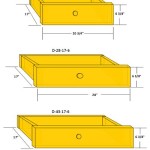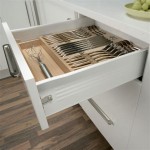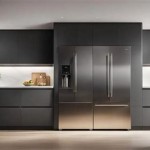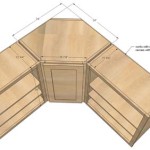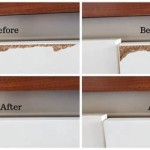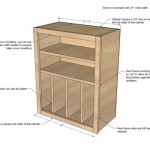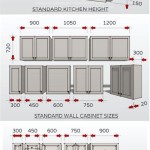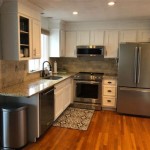How to Refinish Kitchen Cabinets Without Stripping
Refinishing kitchen cabinets without stripping is a cost-effective and rewarding way to update your kitchen's look. By following these simple steps, you can achieve professional-looking results without the hassle and expense of stripping the cabinets down to bare wood.Materials You'll Need:
- Cleaning solution (1 part TSP to 4 parts warm water) - Soft cloths or sponges - Sanding sponge or fine-grit sandpaper - Tack cloth - Primer (oil-based for best adhesion) - Paintbrush or roller - Cabinet paint - Polyurethane or clear finish - Optional: Glaze or antiquing mediumStep 1: Clean the Cabinets
Start by cleaning the cabinets thoroughly with a solution of TSP (trisodium phosphate) to remove any dirt, grease, or stains. Rinse the cabinets with clean water and let them dry completely.Step 2: Lightly Sand the Surfaces
Use a sanding sponge or fine-grit sandpaper to gently scuff the surface of the cabinets. This will create a slightly rougher surface that will allow the primer and paint to adhere better.Step 3: Remove Dust and Debris
Wipe down the cabinets with a tack cloth to remove any dust or debris from sanding. This will ensure a smooth and even paint finish.Step 4: Apply Primer
Apply a coat of oil-based primer to the cabinets using a paintbrush or roller. Allow the primer to dry completely according to the manufacturer's instructions. Primer helps to seal the surface of the cabinets and prevents the paint from absorbing into the wood.Step 5: Paint the Cabinets
Apply two coats of cabinet paint to the cabinets. Use a light, even stroke and allow each coat to dry completely before applying the next. Cabinet paint is designed to provide a durable and chip-resistant finish.Step 6: Protect with Polyurethane or Clear Finish
Once the paint is completely dry, apply a coat of polyurethane or clear finish to protect the cabinets from wear and tear. Allow the finish to dry completely.Step 7: Add Glaze or Antiquing (Optional)
If desired, you can add a glaze or antiquing medium to give the cabinets an aged or distressed look. Apply the glaze or antiquing medium with a brush or sponge and let it dry. Wipe away any excess with a clean cloth.Tips for Refinishing Cabinets Without Stripping:
- Use a high-quality primer and paint specifically designed for cabinets. - Allow ample drying time between each step to ensure a durable finish. - If the cabinets have heavy scratches or dents, fill them with wood filler before sanding and painting. - Test the paint and finish on an inconspicuous area first to ensure you like the color and results. - If you encounter any problems or have questions, don't hesitate to seek professional advice from a cabinet refinisher.
Refinish Kitchen Cabinets Without Stripping

Refinish Kitchen Cabinets Without Stripping

How To Refinish Kitchen Cabinets Without Stripping Ron Hazelton

How To Refinish Oak Cabinets Without Stripping Home Painters

How To Refinish Oak Cabinets Without Stripping Home Painters

How To Paint Kitchen Cabinets Without Sanding Sustain My Craft Habit

Diy How To Paint Cabinets Without Sanding Vlog

Can You Paint Kitchen Cabinets Without Sanding

Darken Cabinets Without Stripping The Existing Finish Pneumatic Addict

How To Paint Kitchen Cabinets Without Sanding The Budget Decorator
Related Posts

